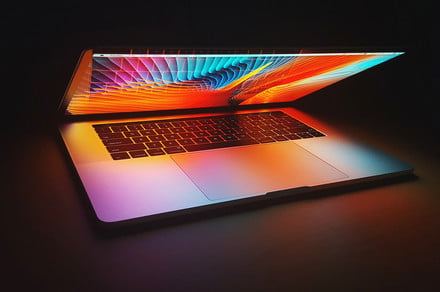Over the last couple of years, Apple has been rolling out high-end mini-LED displays on its latest devices, including the brand-new MacBook Pro range and the iPad Pro. However, according to a new report from Korean website The Elec, Apple will replace these displays with OLED panels at some point after 2025.
The outlet says Apple had originally planned to debut the tech on its laptop range in 2025, but that this date is now likely postponed. The iPad range, on the other hand, could get OLED screens in late 2023 or 2024. The Elec states they will come to 12.9-inch and 11-inch iPads, which almost certainly means the iPad Pro.
It’s an interesting theory, not least because Apple’s mini-LED screens — dubbed Liquid Retina XDR by the company — have been touted as avoiding the burn-in problem that can afflict OLED displays. Mini-LED screens can also go brighter than their OLED counterparts, with the new MacBook Pros hitting up to 1,600 nits of peak brightness. Still, there are plenty of benefits that OLED can offer over mini-LED alternatives.
For one thing, OLED screens offer lighting and dimming down to the individual pixel, which allows for much more precise color and lighting control. Mini-LED panels, on the other hand, rely on much larger lighting zones, which can result in a “halo” effect surrounding bright areas on dark backgrounds.
Right now, though, the price of outfitting its products with OLED panels is thought to be too high for Apple. That could go some way to explaining the 2025 date, by which point the price might have dropped to a more palatable amount for the Cupertino firm.
The main driver of the cost is reportedly Apple’s desire to use an unusual double-stack structure in the panel. This means using two light emission layers, which “doubles luminance and extends the panel’s lifespan,” according to The Elec. Given OLED’s burn-in problems, and the longer product lifespan of MacBooks compared to iPhones, Apple considers this doubling necessary if it is to switch to OLED screens.
The displays in Apple’s MacBooks have always been found near the top of the laptop screen charts, and the company’s mini-LED Pro Display XDR, released with the 2019 Mac Pro, also rams home the company’s prowess in this area. Switching to OLED could strengthen Apple’s hand further.
The MacBook would not be the first Apple device with an OLED screen, though. The complete iPhone 13 range uses OLED panels, while the Apple Watch has done so since its very first version. Once Apple’s laptops and iPad Pro tablets make the switch, almost every Apple device with a display would use the tech.

